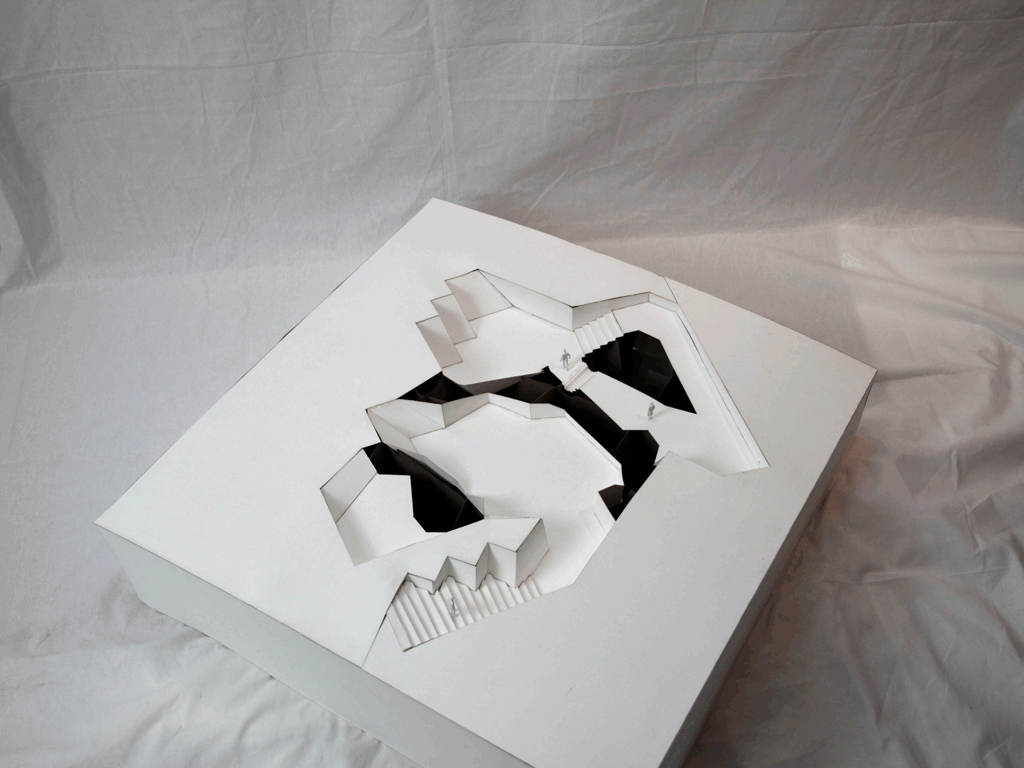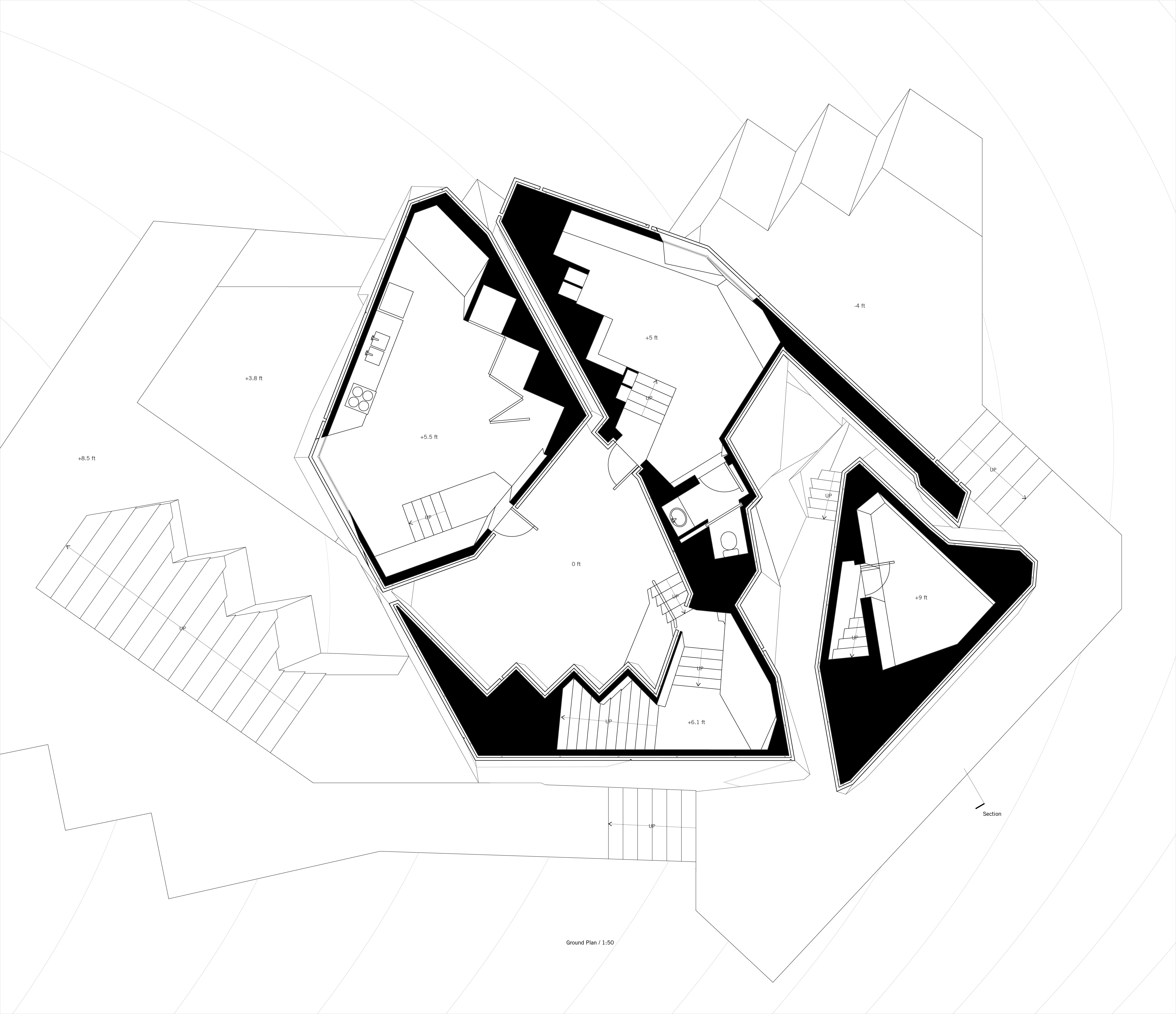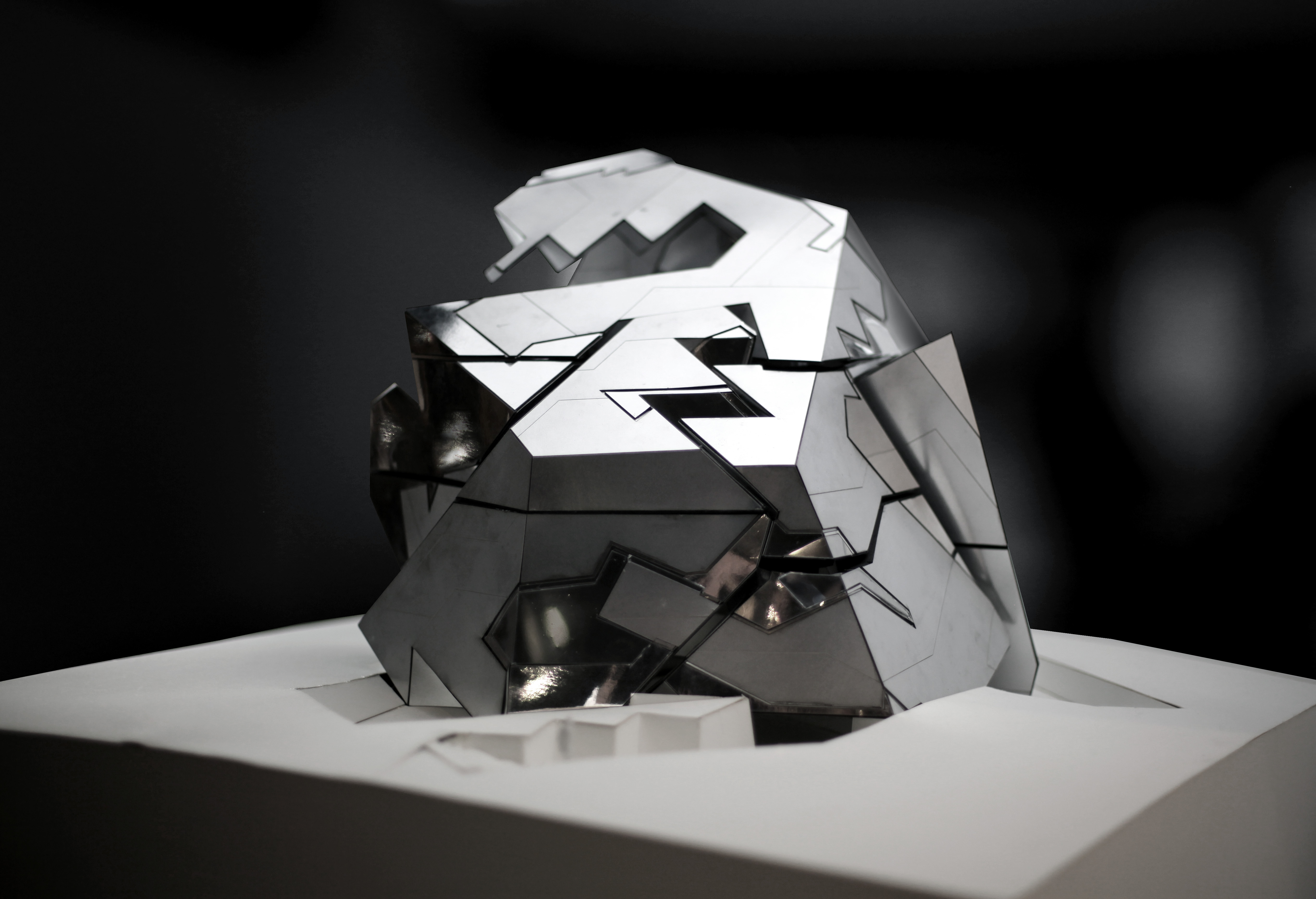
Studio
December 2015
Instructor: Tom Wiscombe
AT: Alex Alcalá
Selected for Open House Exhibition 2017
Part of SCI-Arc Spring Show 2016
December 2015
Instructor: Tom Wiscombe
AT: Alex Alcalá
Selected for Open House Exhibition 2017
Part of SCI-Arc Spring Show 2016
The studio is interested in the fit/misfit nature of objects, this project focuses on methods of resolving conflict when objects misfit. The project began with figures carrying distinctive ziggurats and faceted faces which then carry over to become the massing. Both features remain legible to maintain a balance between blockier parts and more detailed parts. These figures are then unified with a larger part to form the massing, which is created using 3 different methods of resolution. Additive, where the object remains a separate entity from the rest, negative, where the figure is subtracted from the mass, and a half-in, half-out figure that behaves like both positive and negative.
The way interior volumes are conceived are somewhat similar to Loos’ Raumplan in the Muller house; where he fitted in cubes to form interior volumes, this project fitted in irregular volumes. These volumes were however fitted in at an angle that they would each intersect and conflict on another, and solving these conflicts become opportunities to create new spaces. These in-between, uncategorized spaces challenges the traditional pouche space and blurs the line between what’s inside and outside, habitable and inhabitable.
The way interior volumes are conceived are somewhat similar to Loos’ Raumplan in the Muller house; where he fitted in cubes to form interior volumes, this project fitted in irregular volumes. These volumes were however fitted in at an angle that they would each intersect and conflict on another, and solving these conflicts become opportunities to create new spaces. These in-between, uncategorized spaces challenges the traditional pouche space and blurs the line between what’s inside and outside, habitable and inhabitable.
The circulation, unlike the Muller house, is embedded and hidden in the interstitial spaces created to emphasize the distinct volume of spaces within the massing, each interior room remains autonomous and behaves like objects of their own.
One would enter the building from the outside, arrive at a courtyard that’s covered but still exterior, and have the option to enter either the dining or living areas. But to go from one room to another one would have to come back outside then in - this is how the positive object is experienced. One could also walk towards the back of the building into a cave-like courtyard, which hosts the study but it remains inaccessible at ground level. But as one moves up to the second level, the same figure begins to merge into the main volume, and the same spot now becomes interior. Yet to access the positive object one would still have to exit the interior and enter on the outside.
One would enter the building from the outside, arrive at a courtyard that’s covered but still exterior, and have the option to enter either the dining or living areas. But to go from one room to another one would have to come back outside then in - this is how the positive object is experienced. One could also walk towards the back of the building into a cave-like courtyard, which hosts the study but it remains inaccessible at ground level. But as one moves up to the second level, the same figure begins to merge into the main volume, and the same spot now becomes interior. Yet to access the positive object one would still have to exit the interior and enter on the outside.
Model Assembly
1/8" = 1'-0"
1/8" = 1'-0"

Drawings
1:50
1:50






The mass of the project is mostly about resolving conflict between figures and the container, an opportunity is therefore taken to instigate conflict among figures themselves through surface articulation. The silhouettes of each figure is cast onto the massing, and impossible shadows that merges a corner of a figure and the tail of another are created.
The resulted pattern is then used to articulate a sense of misfit the on the exterior while subdividing and taming the original “chromeness” the mass carries and limiting reflections only to where they are most provocative. At most times while being viewed, the muted metal panels would bleed out and homogenize the rest of the reflective parts; but if one approaches it at certain angles, one would start to discover the mirrored parts find subtle, yet eerily mesmerizing sparks of reflected light.
The resulted pattern is then used to articulate a sense of misfit the on the exterior while subdividing and taming the original “chromeness” the mass carries and limiting reflections only to where they are most provocative. At most times while being viewed, the muted metal panels would bleed out and homogenize the rest of the reflective parts; but if one approaches it at certain angles, one would start to discover the mirrored parts find subtle, yet eerily mesmerizing sparks of reflected light.



